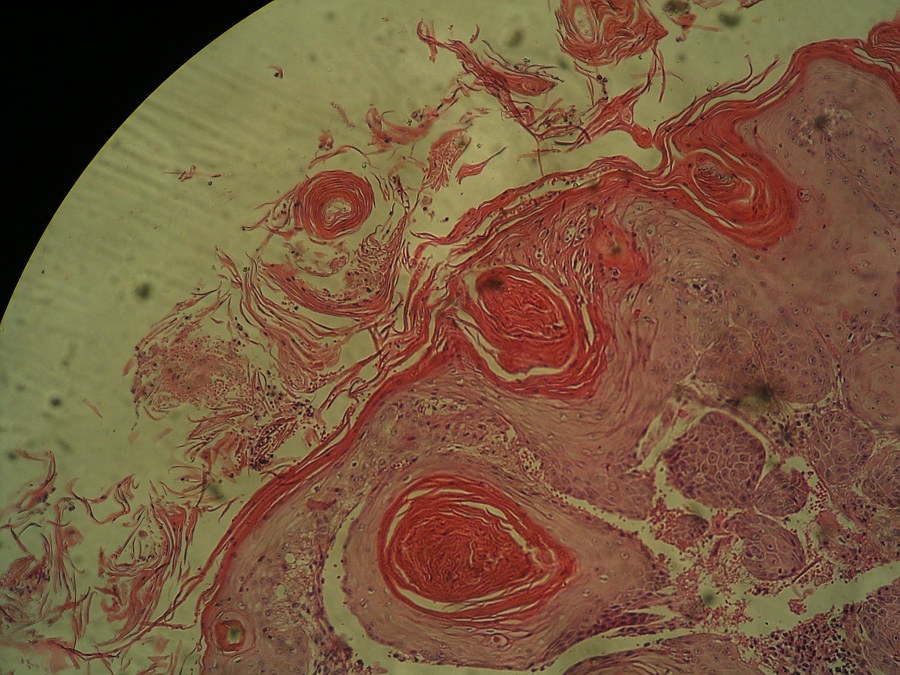Malignant tumor of squamous cells or squamous epithelium is known as squamous cell carcinoma. It is most common in elderly and some exposed areas of body. Metastasis is very late and relatively uncommon. Less than 5% of squamous cell carcinoma metasatize to regional lymph nodes. Risk factors for squamous cell carcinoma include:
- Chronic ulcers
- Osteomyelitis –causing sinus formation on skin
- Old burns
- Scars
- Exposure to ionizing radiations
- Ingestion of chemicals
- Tobacco and bettle nut chewing
- Exposure to industrial carcinogens like tar and oils
- Being immunocompromised
- Pre-malignant skin conditions like xeroderma pigmentosum

Morphology
Gross
Usually presents as a small skin nodule or non-healing ulcer, overlying skin is not intact in most of the cases, tumor size is variable, cut surface is usually grey white in color.
Microscopy
Carcinoma in situ is characterized by atypical looking squamoid cells having hyperchromatic pleomorphic nuclei, having prominent nucleoli. N:C (nucleus to cytoplasm) ratio is high. Mitotic figures are frequently present in moderately to poorly differentiated forms. In case of well differentiated squamous cell carcinoma, characteristic keratin pearls are seen, but is not a diagnostic feature.
Want a clearer concept, see all images on Squamous Cell Carcinoma
 howMed Know Yourself
howMed Know Yourself




